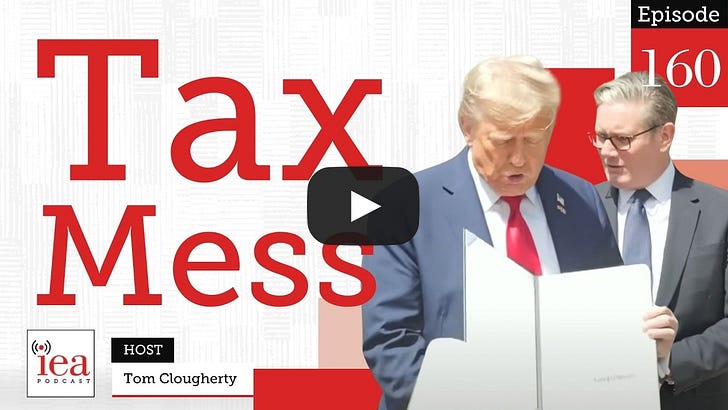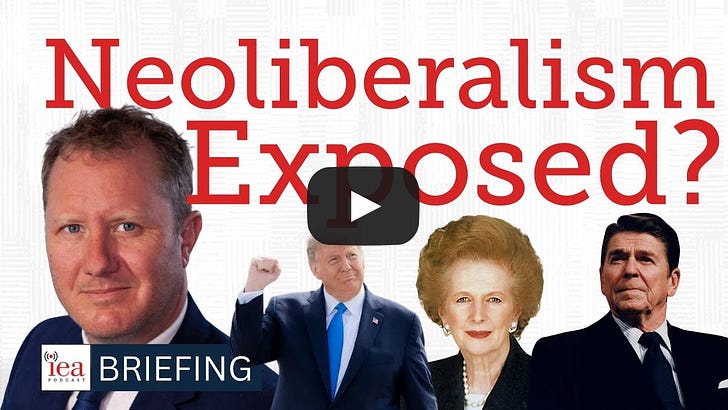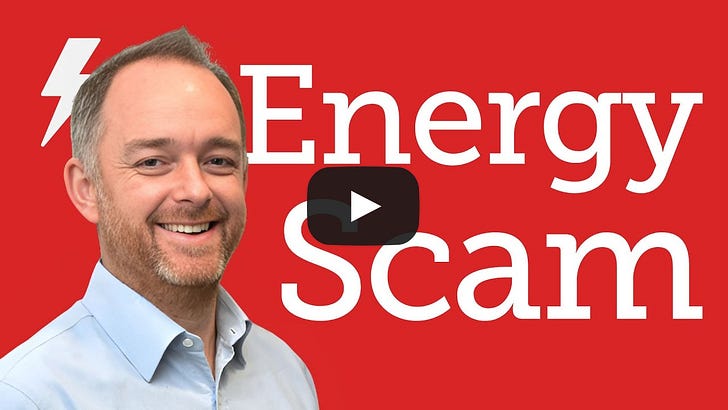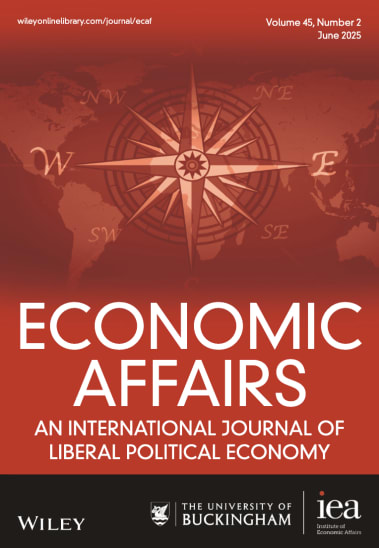|
In today’s newsletter:
What is going on with HS2?
The latest edition of Economic Affairs
Upcoming events
Can we use wind power?
This week the government announced that HS2 will not meet its already much-delayed target opening date of 2033. This is hardly a surprise, as this massive scheme has consistently failed to meet targets – especially in spending, where the cost has always risen way beyond its successively extended budgets.
For those of us who’ve been around the IEA for a while, there is a temptation to say ‘told you so’ very loudly.
Even before the scheme was officially approved in 2012, Kyn Aizlewood and our former transport specialist Richard Wellings had put out an IEA paper High Speed 2 - the next government project disaster which concluded that there was ‘a significant risk’ that HS2 would become ‘the latest in a long series of government big-project disasters with higher-than-forecast costs and lower-than-forecast benefits’.
Two years later Richard wrote another paper, The High Speed Gravy Train, which documented how HS2 decisions had been taken on political rather than economic grounds – with special interests such as engineering firms, other business groups and local authorities pressuring the Conservative government of the time. He forecast that the total costs of the scheme would exceed £80 billion, far in excess of the figures proposed to Parliament. Government spokespeople and other HS2 fans dismissed this at the time as crazy talk, but the costs are now likely to exceed £100 billion for a much-truncated scheme without the links to Manchester and Leeds.
The rationale for HS2 shifted over time. One reason it was first mooted under the Gordon Brown government was as a greener substitute for an extra Heathrow runway (yes, I know). With three routes from London to Birmingham already available, the only advantage was greater speed – and time saved was an important element in cost-benefit analysis in those far-off days when nobody could work on trains and Zoom meetings were unheard of. ‘Levelling up’ by improving access to the North was also touted, though it was never clear how this would work – and of course that possibility was lost with the decision to cut out the Manchester and Leeds routes.
The only enduring benefit from a completed HS2 would be relief of the overcrowded and notoriously poorly-performing West Coast main line, not least to allow the expansion of successful and privately-funded freight and Open Access services, which are currently held back by capacity constraints. But that depends on a northern link back to the WCML which is as yet unplanned for or funded. It also requires our nationalised Great British Railways doing some proper strategic thinking. However there appear to be lengthy delays on that particular line. Must be the wrong kind of snow.
What will happen? Some argue that HS2 should be abandoned and the track paved over and turned into a motorway to relieve the M1 and M6. That doesn’t seem to me to be a starter. 27 miles of the route are in tunnels, while the impressive two-mile-long Colne Valley Viaduct, designed for two rail tracks, would find it difficult to carry a six-lane motorway.
Perhaps the scheme will just end up being abandoned, left to decay and vandalism. Like a modern-day Ozymandias, it could serve to remind us of the hubris of twenty-first-century British governments.
****
Economic Affairs, the academic journal published by the IEA and the University of Buckingham, has considerably improved its ranking among economic journals, and its ‘impact factor’ – one of those metrics to which we all have to pay attention these days. But I learnt this week of an unusual impact factor. Last autumn we published an article by an Italian classical liberal author, Giovanni Patriarca, whom I had the pleasure of meeting a few days ago. The article was about an obscure pamphlet, anticipating later developments in monetary theory, written by the Spanish author Juan de Mariana in the early 17th century.
Giovanni told me that prior to the publication of the article, copies of the pamphlet changed hands at $600 a time. But that rose to $3000 following our publication. That’s what I call an impact… of course, post hoc doesn’t necessarily mean propter hoc, but as they used to say at The Sun during Kelvin MacKenzie’s glory days, it’s too good to check.
Len Shackleton
Editorial and Research Fellow
The best way to never miss out on IEA work, get access to exclusive content, and support our research and educational programmes is to become a paid IEA Insider.
IEA Podcast: Executive Director Tom Clougherty, Editorial Director Kristian Niemietz, and Managing Editor Daniel Freeman discuss HS2, the meaning of ‘liberal’, and the ‘One Big Beautiful Bill’, IEA YouTube

Economic Affairs (45.2)
Articles published in the latest issue of Economic Affairs include…
EDITORIAL
ANNOUNCEMENT
ORIGINAL ARTICLES
Adam Smith’s hopes for a liberal America, by Daniel B Klein
Milton Friedman’s spending matrix revisited: ‘Spending efficiency’ and ‘preference compatibility’ across different economic systems, by Ali Zeytoon-Nejad
DISCUSSION
Rethinking monetary policy: The case for nominal GDP targeting, by Damian Pudner
REVIEW ARTICLE
Misreading Mises, by Christopher Snowdon
BOOK REVIEW
By Matt Goodwin. Bad education: Why our universities are broken and how we can fix them, by J R Shackleton
News and Views
Rachel Reeves set for axe as 'vultures circle' after terrible week for UK economy, Executive Director Tom Clougherty quoted in The Express
The Death of Neoliberalism and the Rise of Populism | IEA Briefing, Communications Manager Reem Ibrahim interviews Head of Lifestyle Economics Christopher Snowdon, IEA YouTube

Interest rates views of other economists, Economics Fellow Julian Jessop quoted in CityAM
Trump’s ‘Big Beautiful Bill’ is bad news for Britain, Strategic Partnerships Manager Matthew Bowles, CityAM
“United States President Donald Trump’s latest legislative behemoth has sent shockwaves through Washington. Dubbed “a disgusting abomination” by Elon Musk and greeted with scepticism by Republican Kentucky Senator, Rand Paul, who has declared that “the math doesn’t really add up”, the backlash has been swift. It’s not difficult to see the cause of such upset. The nonpartisan Congressional Budget Office estimates that the ‘One Big Beautiful Bill’ (OBBB) will add $3.8 trillion to the US national debt by 2034, which currently stands at a staggering $36 trillion.”
DWP freebie for millions of state pensioners 'difficult to justify' and could be axed, Communications Manager Reem Ibrahim was quoted in Birmingham Live
Reem Ibrahim, of the Institute of Economic Affairs, said: "It is difficult to justify a system where the wealthiest age group in the country is having their travel funded by taxpayers. We urgently need a targeted approach."
Britain is Paying for Wind Power It Can't Even Use | Guy Newey | Free the Power, Energy Analyst Andy Mayer interviews Guy Newey, IEA YouTube

Last week, Communications Manager Reem Ibrahim spoke at Freedom Fest 2025 in California.
You’re currently a free subscriber to Insider. For the full experience, upgrade your subscription.
Paid subscribers support the IEA's charitable mission and receive special invites to exclusive events, including the thought-provoking IEA Book Club.
We are offering all new subscribers a special offer. For a limited time only, you will receive 15% off and a complimentary copy of Dr Stephen Davies’ latest book, Apocalypse Next: The Economics of Global Catastrophic Risks.

![[INVITATION] Smoke & Mirrors](https://substackcdn.com/image/fetch/%24s_!Y6JT!,w_1300,h_650,c_fill,f_auto,q_auto:good,fl_progressive:steep,g_auto/https%3A%2F%2Fsubstack-post-media.s3.amazonaws.com%2Fpublic%2Fimages%2F286950b1-0660-4820-bebc-7c60380779ac_1920x1080.png)

